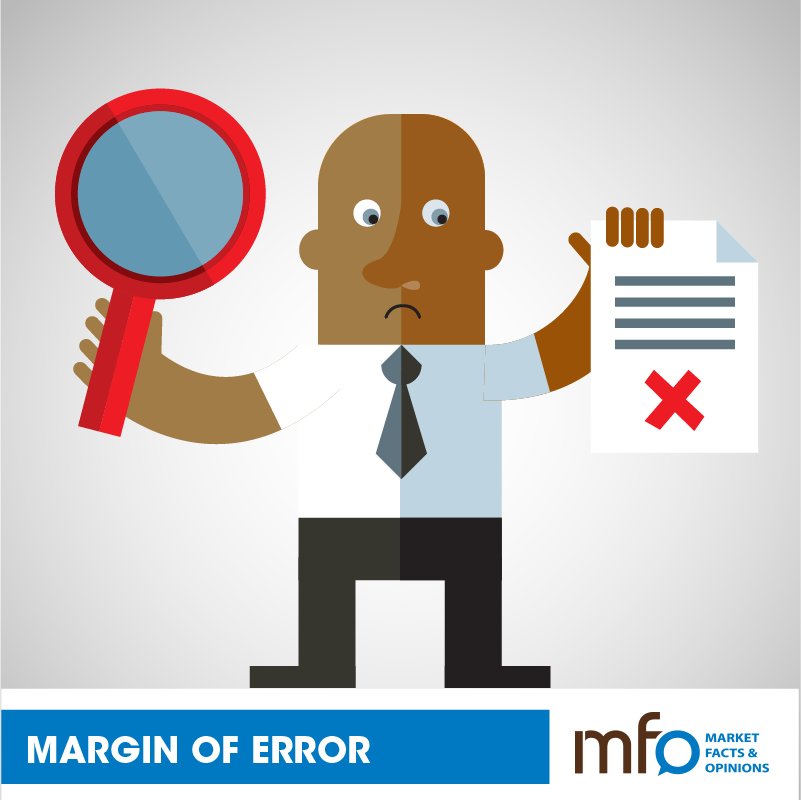- Market Facts & Opinions (2000) Ltd
- mfo@mfocaribbean.com
- Tel: (868) 627-8417/8524
Margin of error


All polls have ‘error’ since one never interviews the entire population but only a sample. One sample may vary from the other and so the results will be different. The attempt to measure this difference is called ‘margin of error’ and this is the most important thing to know about a poll if you wish to put trust in it. It tells you how representative your sample is and therefore how much you can trust the results.
Margin of error is usually reported as +/- x% at 95% confidence level. It means that if you were to repeat the same study 100 times the true answer would be + or – the quoted number (the range) 95 times. This is important since it speaks to the reliability of the results. It is also important in that when comparing results you need to take the ‘margin’ into consideration to know whether the differences are important. For example, if you look at the trend reported by the Express’ poll for Mrs. Persad-Bissessar and Dr. Rowley’s approval rating for similar period, there is no difference in their performances.
If you had a pot of soup that has been sitting for a while and took a spoon out the contents you drew may not be as representative of the whole pot as if you stirred the pot before taking the scoop. Stirring the soup is like choosing a sample in a random manner. This ‘stirring’ is important to be able to estimate correctly the ‘margin of error’.
HHB and Associates (The Guardian’s pollster) aka HHB says that 32% approve of the job that Dr. Rowley is doing as Prime Minister. Solution By Simulation (The Express’ pollster) aka SBS claims that his approval rating is 42%. Both polls claim that their margin of error is the same: +/- 5% at 95% confidence level. This means that HHB’s range is 27% to 37% while the SBS’ range is 37% to 47%.
This means that either one of these studies may be a ‘loopy 5%’ but both cannot claim to have the same margin of error with these different ranges. Another interpretation could be that the margin of error may be larger than stated for one or the other.
There are four additional things that we need to know in order to identify which survey to trust: the randomness of the selection of the sample (the sample design), the size of the sample, the variability in the answers given and the proportion of the total universe sampled.
